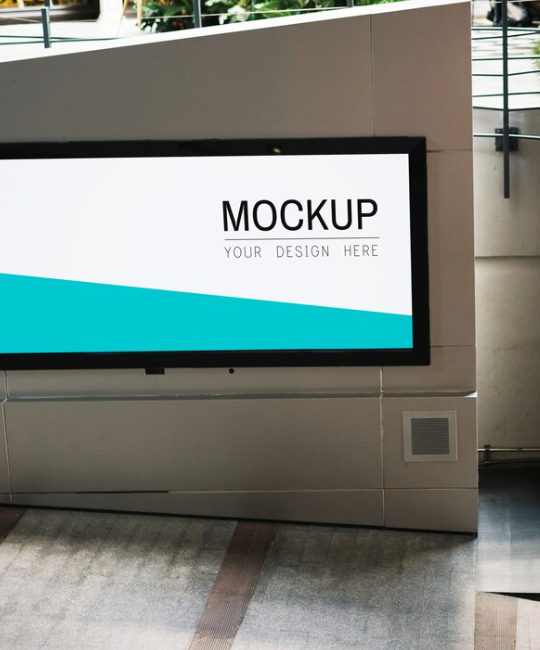 Building a brand from scratch isn’t always straightforward. Not only do you need to ensure that your branding clearly reflects your product or service, but you also need to create something that resonates with your target audience, and stands out from the crowd in today’s uber-competitive market.
Building a brand from scratch isn’t always straightforward. Not only do you need to ensure that your branding clearly reflects your product or service, but you also need to create something that resonates with your target audience, and stands out from the crowd in today’s uber-competitive market.
Successful brand development involves a host of tactics and key steps that will set you apart from the competition. Let’s explore what those steps are.
Table of Contents
What is a brand?
First of all, it’s important to understand what a brand really is. While some people refer to your logo and colour scheme as your ‘brand’, the reality is that there’s much more to it. Jeff Bezos, the founder of Amazon and multi-billionaire, says: ‘Your brand is what other people say about you when you’re not in the room.’ A well-thought-out brand identity will strongly reflect your value proposition and resonate with your target audience – it should also demonstrate the values and personality of your business. While brands do evolve over time, it’s important to put in the groundwork to create a strong brand with a long-term impact.
Steps to build your brand
1. Research the market
The first step to building a brand is research. Start by looking at competitors in your sector or industry, and make notes on their branding. Specifically, look at their name, logo, colour schemes and tag lines – this should give you a pretty good overview of who their target audience is, and their offering. If you’re not sure who your competitors are, start by Googling your product or service category, and see who comes first. Once you have the names of your competitors, start to look at their social media channels to gauge their tone of voice and their key messaging.
Once you have a strong idea of your competitors and their branding, you can use these insights for the foundation for your own brand – or in some cases, use them for tips of what not to do.
2. Define your purpose and mission
The next step is to define your brand values, mission and goals. A brand purpose is not only nice marketing material, but by implementing it throughout your business, it helps with decision making processes by asking ‘Does this help get us closer to, or further away from our purpose?’ and ‘Does this align with our values as a business?’
Interestingly, nine out of 10 people say they have a more positive image of a company if it supports an environmental or social cause, and 50% say that they make purchase decisions based on shared beliefs with a brand. It’s therefore important to clearly communicate your goals and what you stand for as a business.
When coming up with your brand purpose, try not to make it too broad or ‘fluffy’. Some great examples of brand purposes and mission statements include Ikea (‘to create a better everyday life for the many people’), Tesla (‘to accelerate the world’s transition to sustainable energy’), and P&G (‘we will provide branded products or services of superior quality and value that improves the lives of the world’s consumers’).
3. Choose a business name
While the actions of your business are no doubt more important than its name, it’s important to create a name that stands out and effectively represents your business. There are plenty of business-name generators available on the internet, and you’ll also want to check that there’s a .com or .co.uk domain available for your chosen name, too.
Be sure to keep it somewhat unique – not only to save customer confusion but so you don’t get tied into any potential poor PR of another brand/world event (such as Corona, Coronavirus). If you sell multiple products to multiple industries or have future plans for a large expansion, keep your brand name broad so that you have the space to evolve.
4. Logos, look and feel
The next step to take once you have your name is to create a logo, and a look and feel for your brand. This will include the colours you use, the tones of colour you use and even the meaning of those colours.
If you don’t know where to start, try heading to Pinterest or using magazines to create a mood board of the tones you like, then refer to the colour wheel to find complementary or analogous colours to complement those tones, and build a colour palette.
Once you have your colour palette and brand name, this can help inform the direction of and options available for your logo.
5. Craft your messaging
It’s important to work on your messaging next. Start by coming up with some adjectives that describe your brand, or the way you would like your brand to come across. Don’t just stick to generic business language or buzzwords, use words that you would use to describe a person like ‘life of the party’, ‘adventurous’ and ‘witty’ to create a fully-rounded brand persona.
You should then consider your tone of voice based on the adjectives you’ve chosen. Are you authoritative, friendly, helpful, funny or trendy? Your tone of voice dictates much of your marketing, sales and communication strategy, so it’s important to explore this when crafting your messaging.
6. Consistently apply your branding
The final step in building your brand from scratch is to consistently apply this. That means using the same colour scheme, logo and styles for all of your communications, from staff uniforms and car wraps to brochures and billboards. By making your brand consistent across all platforms (both online and offline), you make your brand easily recognisable and save customer confusion.
Remember that all that you do now will help shape and form the future direction and decision-making of your business, so this isn’t a process that should be rushed. While changing your brand in the future isn’t entirely out of the question, significant changes can be extremely costly, time-consuming and can affect revenue if done incorrectly.







